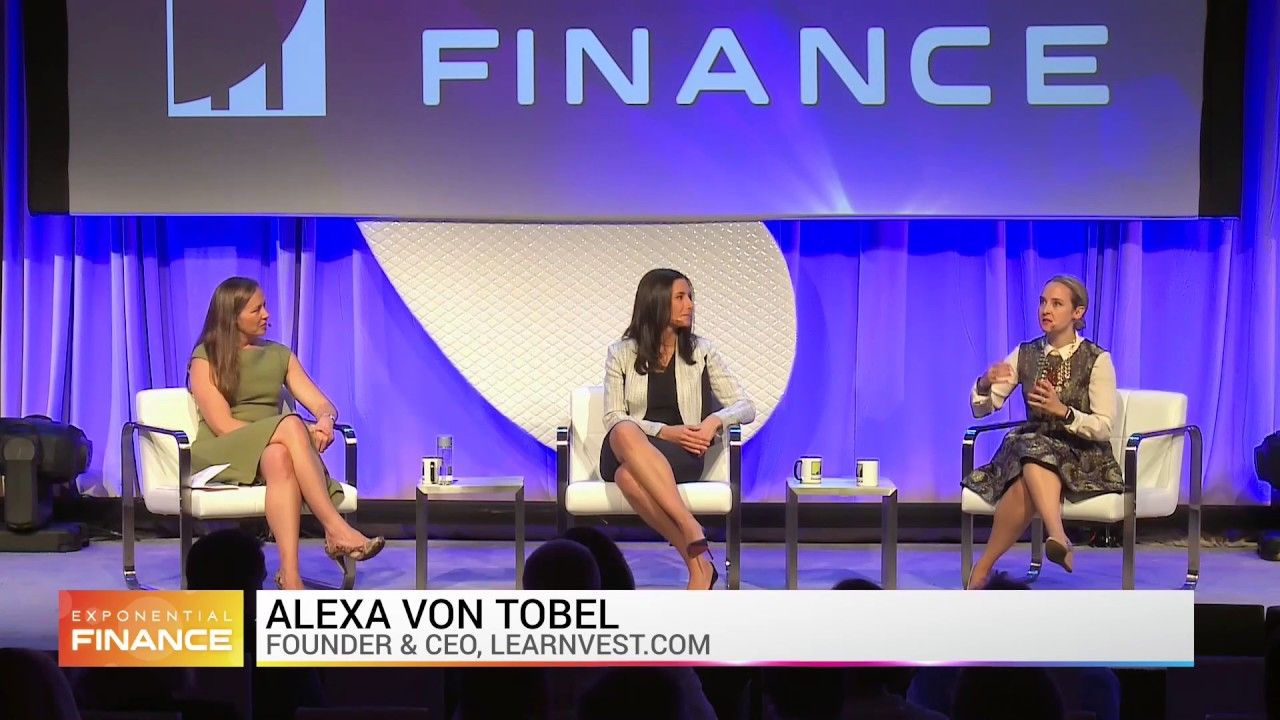Page 10504
Feb 25, 2017
Financial Leaders: Make Your Mark on the Future at Exponential Finance
Posted by Karen Hurst in categories: bitcoin, economics, finance, information science, quantum physics, robotics/AI, singularity

From digital currency to machine learning, the financial industry is being rocked by exponential technologies. Blockchain, artificial intelligence, big data, robotics, quantum computing, crowdfunding, and computing systems are allowing startups to solve consumer needs in new ways.
The downfall of the world’s largest institutions may not be imminent, but these new technologies are breaking up the previously rock solid foundation of finance, and allowing the fintech world to spring through the cracks. What’s happening now will rewrite the future of finance for years to come. By recognizing this reality and planning for it now, financial professionals can learn to thrive in an increasingly uncertain global economy.
Continue reading “Financial Leaders: Make Your Mark on the Future at Exponential Finance” »
Feb 25, 2017
If You Can’t Find Dark Matter, Look First for a Dark Force
Posted by Andreas Matt in categories: cosmology, particle physics
While cosmologists may be fascinated by what dark matter does, particle physicists are fascinated by what dark matter is. For us, dark matter should be—naturally—a particle, albeit one that is still lurking hidden in our data. For the last few decades, we’ve had a tantalizing guess as to what this particle might be—namely, the lightest of a new class of supersymmetric particles. Supersymmetry is an extension to the Standard Model of particles and forces that nicely addresses lingering questions about the stability of the mass of the Higgs boson, the unification of the forces, and the particle nature of dark matter. In fact, supersymmetry predicts a vast number of new particles—one for each particle we already know about. Yet while one of those new particles could constitute dark matter, to many of us that would be just a happy byproduct.
But after analyzing data from the first (2010–2012) and second (2015–2018) runs of the Large Hadron Collider (LHC), we haven’t found supersymmetric particles yet—indeed, no new particles at all, beyond the Higgs boson. So, while we continue to hunt for supersymmetry, we’re also taking a fresh look at what our cosmology colleagues can tell us about dark matter. It is the strongest experimental evidence for new physics beyond the Standard Model, after all.
In fact, some might say that a principal goal of the LHC and future colliders will be to create and study dark matter. For that to happen, there must be a means for the visible universe and the dark universe to communicate with each other. In other words, the constituents of the particles that we collide must be capable of interacting with the putative dark-matter particles via fundamental forces. A force requires a force carrier, or boson. The electromagnetic force is carried by the photon, the weak nuclear force by so-called vector bosons, and so on. Interactions between dark matter and normal matter should be no different: They could happen by exchanging dark bosons.
Continue reading “If You Can’t Find Dark Matter, Look First for a Dark Force” »
Feb 24, 2017
The Long-Shot Bid to Put Crispr in the Hands of the People
Posted by Dan Kummer in categories: bioengineering, biotech/medical, genetics, government, law
Last week, the US Patent and Trademarks Office ruled on the most-watched patent proceeding of the 21st century: the fight for Crispr-Cas9. The decision was supposed to declare ownership of the rights to the revolutionary gene editing technique. But instead, the patent judge granted sorta-victories to each of the rival parties—a team from UC Berkeley and another with members from both MIT and Harvard University’s Broad Institute. That’s great for those groups (and their spin-off, for-profit gene editing companies with exclusive licenses). But it leaves things a bit murkier for anyone else who wants to turn a buck with gene editing.
The Crispr discoverers now have some authority over who gets to use Crispr, and for what. And while exclusive licenses aren’t rare in biotech, the scope of these do stand out: They cover all the 20,000-plus genes in the human genome. So this week, legal experts are sending a formal request to the Department of Health and Human Services. They want the federal government to step in and bring Crispr back to the people.
Crispr is new, but patent laws governing genetic engineering date back decades. In 1980, shortly after the Supreme Court ruled that genetically engineered microbes were patentable, Congress passed something called the Bayh-Doyle Act. The law gives permission for universities to patent—and license—anything their researchers invented with public funds, making it easier to put those inventions back in the hands of citizens.

https://www.youtube.com/watch?v=bY_wfKVjuJM&feature=youtu.be
Recently, I saw an article making big deal that a robot can now write. Ok, it only took us 253 years to enhance it a little. Meet the Automaton from Sweden that could write and was designed to look like a young boy. Made in 1774 and still writes today.
We had Automaton that did this since 1774. 1st one was from Sweden and made in 1775.
Feb 24, 2017
The Chess Turk explained
Posted by Karen Hurst in categories: media & arts, robotics/AI

https://www.youtube.com/watch?v=0DbJUTsUwZE&feature=youtu.be
Wonder what Google thinks about this version of a robot playing Chess from 1769. The point is, we really have struggled in AI particularly robotics for over 250 years.
As you can hear I’m not a native speaker. Please execuse grammatical and pronunciation mistakes.
Feb 24, 2017
How Leaders Dream Boldly to Bring New Futures to Life
Posted by Karen Hurst in category: futurism
Keys of the emerging leaders are — 1) Futurist 2) Technologist 3) Innovator 4) Humanitarian. I rank them as (only in my opinion only as it truly depends on industry, company and products, culture, etc.)
1) futurist 2) innovator 3) technologist 4) humanitarian
This article is part of a new series exploring the skills leaders must learn to make the most of rapid change in an increasingly disruptive world. The first article in the series, “How the Most Successful Leaders Will Thrive in an Exponential World,” broadly outlines four critical leadership skills—futurist, technologist, innovator, and humanitarian—and how they work together.
Continue reading “How Leaders Dream Boldly to Bring New Futures to Life” »
Feb 24, 2017
IOTA — Next Generation Blockchain
Posted by Karen Hurst in categories: bitcoin, business, internet
A new world is coming — been waiting for a while. Glad we’re finally seeing the promotion.
As Internet-of-Things keep expanding the need for interoperability and sharing of resources become a necessity. IOTA enables companies to explore new business-2-business models by making every technological resource a potential service to be traded on an open market in real time, with no fees.
Feb 24, 2017
Why the Potential of Augmented Reality Is Greater Than You Think
Posted by Klaus Baldauf in categories: augmented reality, business, habitats, mobile phones, virtual reality
Never before have businesses been able to build billion-dollar valuations in so little time. Never before have incumbent enterprises been able to go out of business so quickly. Disruption is now commonplace, and augmented reality (AR) is emerging as yet another avenue to turn industries on their heads. But what direction will this new technology take?
AR overlays digital information on the physical world using a smartphone (think Pokémon Go) or a headset. In its simplest form, AR is simply a rectangular display floating in front of the eyes, à la Google Glass. More advanced forms will drop video game characters or useful information seamlessly onto physical objects, from homes to industrial warehouses.

Continue reading “Why the Potential of Augmented Reality Is Greater Than You Think” »













